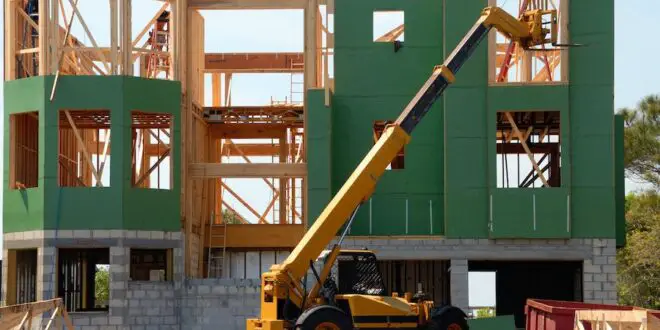The construction industry, a cornerstone of global infrastructure development, is undergoing a profound transformation fueled by technological progress, sustainability imperatives, and a surging demand for inventive solutions. Conventional construction approaches are making way for a spectrum of frameworks that redefine how buildings and infrastructure are conceptualized, constructed, and maintained.
Integrated Project Delivery
Integrated Project Delivery for concrete form systems stands out as a collaborative paradigm reshaping the traditional construction landscape. It assembles key stakeholders, including architects, contractors, and owners, from the project’s nascent stages. At its core, IPD encourages a shared dedication to project objectives, fostering collaboration and trimming inefficiencies. By dismantling conventional silos, IPD amplifies communication, mitigates conflicts, and expedites decision-making, leading to more efficient project timelines and superior overall outcomes.
- Enhanced Collaboration: Early stakeholder involvement cultivates collaborative decision-making, establishing a sense of collective responsibility.
- Risk Mitigation: The shared allocation of risks and rewards aligns the interests of all parties, forging a cooperative and mutually advantageous project environment.
- Efficiency Gains: Streamlined processes and diminished conflicts result in more efficient project delivery, ensuring adherence to timelines and budgets.
Building Information Modeling
Building Information Modeling serves as a digital portrayal of a building or infrastructure’s physical and functional attributes. Extending beyond traditional 3D modeling, BIM integrates data on spatial relationships, geographic information, and quantities. This information-rich model acts as a centralized hub for project information, facilitating better decision-making across the project lifecycle, from design and construction to operation and maintenance. BIM proves to be a potent tool for improving efficiency, curbing errors, and optimizing resource usage.
- Improved Collaboration: All stakeholders, including architects, engineers, contractors, and facility managers, can access and contribute to a shared model.
- Clash Detection: BIM identifies and resolves conflicts or clashes in the design phase, minimizing rework and costly corrections during construction.
- Lifecycle Management: BIM supports operations and maintenance by providing a comprehensive data repository, aiding in efficient facility management.
Modular Construction
Modular construction marks a departure from traditional on-site construction methodologies. It involves the assembly of building components off-site in a controlled environment before transporting and installing them on-site. This approach offers advantages such as expedited project delivery, cost savings, and enhanced quality control. Modular construction is particularly relevant in sectors where repetitive designs and standardized components can be leveraged for efficiency.
- Time Efficiency: Simultaneous on-site and off-site construction significantly reduces project timelines, making it an appealing option for projects requiring swift deployment.
- Cost Savings: Controlled environments minimize waste and optimize material usage, resulting in cost savings and improved budget predictability.
- Quality Control: Factory settings allow for stringent quality control measures, ensuring that each module meets required standards.
Green Building and Sustainable Construction
Sustainable construction has emerged as a pivotal framework, focusing on minimizing the environmental impact of buildings throughout their lifecycle. This framework incorporates energy-efficient design, the use of renewable materials, and waste reduction practices. Green building certifications have gained prominence as they provide a standardized measure of a project’s sustainability. Sustainable construction is not only environmentally responsible but can also result in long-term cost savings.
- Environmental Stewardship: Sustainable construction practices reduce a project’s ecological footprint, promoting responsible resource use.
- Operational Cost Savings: Energy-efficient designs and technologies can lead to reduced operational costs, providing long-term financial benefits.
- Market Demand: With growing awareness of environmental issues, there is an increasing market demand for buildings that adhere to sustainable construction practices.
Lean Construction
Inspired by the lean manufacturing philosophy, Lean Construction is an approach that seeks to maximize value and minimize waste throughout the construction process. This methodology involves optimizing workflows, eliminating unnecessary activities, and continually improving project delivery. Lean construction emphasizes collaboration, transparency, and a focus on delivering value to the end-user. It has gained traction for its potential to enhance project efficiency and overall performance.
- Waste Reduction: Lean construction minimizes non-value-added activities, reducing overall project waste.
- Improved Productivity: Streamlined processes result in better resource utilization and improved project outcomes, contributing to higher productivity.
- Enhanced Collaboration: Lean construction encourages teamwork and open communication among project participants, fostering a collaborative project environment.
Augmented Reality and Virtual Reality
Augmented Reality and Virtual Reality technologies are increasingly integrated into the construction industry to enhance design visualization, training, and project communication. AR overlays digital information onto the physical environment. This allows users to see virtual elements in a real-world context. VR immerses users in a completely digital environment. These technologies enable stakeholders to experience designs in a more interactive and immersive manner, facilitating better decision-making and communication.
- Design Visualization: AR and VR technologies enable stakeholders to experience and understand designs more comprehensively, aiding in decision-making.
- Training and Simulation: These technologies enhance safety training and allow for realistic simulations of construction scenarios, improving overall safety.
- Remote Collaboration: AR and VR facilitate collaboration among project teams, even if geographically dispersed, reducing the need for in-person meetings.
Robotics and Automation
The integration of robotics and automation in construction is ushering in a new era of efficiency and precision. Robots are being employed for tasks such as bricklaying, 3D printing of structures, and autonomous equipment operation. Automation streamlines repetitive and labor-intensive tasks, enhances precision, and contributes to improved safety on construction sites.
- Efficiency Gains: Automation speeds up construction processes, leading to faster project completion.
- Precision and Consistency: Robots can achieve high levels of precision and consistency in construction tasks, minimizing errors.
- Safety Enhancement: Automation reduces the need for manual labor in hazardous environments, contributing to improved safety.
As the construction industry undergoes a profound transformation, these diverse construction frameworks are pioneering the way forward. From collaborative approaches like Integrated Project Delivery to revolutionary technologies like Building Information Modeling and Augmented Reality, each framework offers unique advantages. Embracing modular construction, sustainable practices, lean methodologies, and the integration of robotics and automation are pivotal steps toward a more efficient, sustainable, and technologically advanced construction landscape.
Tomorrow’s construction professionals will need to adapt to these evolving frameworks, staying informed about industry trends and leveraging innovative solutions. By embracing these cutting-edge methodologies and technologies, the construction industry is not just erecting structures but constructing a future where efficiency, sustainability, and technological advancement are at the core of every project. As we continue to explore new horizons, the evolution of construction frameworks promises to shape a built environment that is resilient, intelligent, and responsive to the demands of a rapidly changing world.
 Being Human
Being Human





